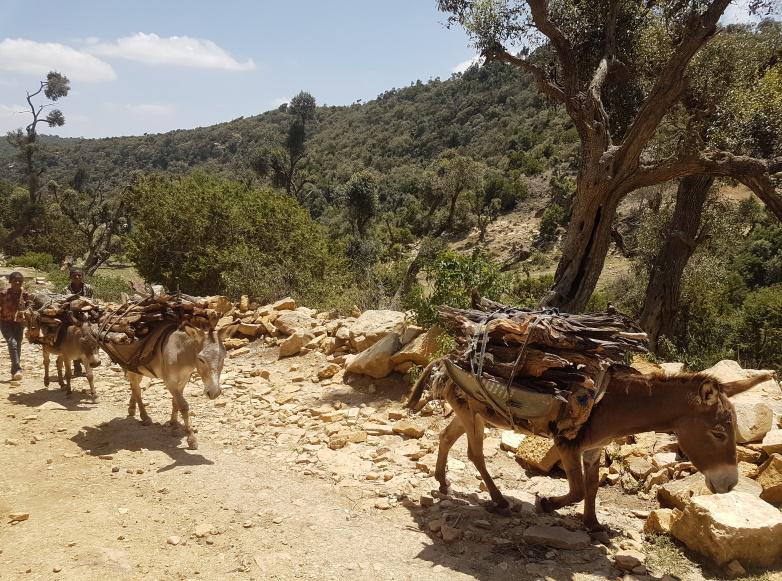Daniel Hagos Berhe
The Desa’a forest is one of the remnant biodiversity hot spots of Eastern Africa. It is a home for 450 species, including globally endangered Dracaena ombet and Emberiza cineracea. However, it is now under heavy deforestation that losing its coverage and species diversity. Hence, this project will identify and prioritize the deforestation drivers of the forest jointly with community for developing its conservation interventions, targeting for rehabilitating the relic forest. In achieving the objectives of the project, data will be collated through discussion, interview and field survey. These collected data will then be scientifically analysed and interpreted to be used for training of (or sharing with) stakeholders at local, regional and global levels using different methods for raising their awareness on conservation of the relic forest and its very valuable species.

Illegal cutting of trees in Desa'a forest, Northern Ethiopia.©WeForest, 2018.
Background information of the project
The Desa’a forest is one of the key remnant dry Afromontane biodiversity hot spots of Eastern Africa (Aynekulu et al., 2009). Even though Desa’a is a protected forest, it is now severely deforested due to different factors. This continuous deforestation was not only losing its coverage but also its biodiversity, for example; its native Olea europaea tree is now heading to extinction (Hadgu et al., 2013). For rehabilitating the forest, some conservation programs were implemented. For example, it was tried to rehabilitate it through soil and water conservation activities. However, this was not successful due to lack of full participation of stakeholders. In addition, our current observation and discussion with stakeholders confirmed that deforestation is still continuing in the forest. Hence, this project is developed based on these facts for ensuring rehabilitation and conservation of the forest by involving all relevant stakeholders with following specific objectives:
1. Identification and prioritization of deforestation drivers of the Desa’a forest
2. Prioritization conservation interventions for rehabilitating the degraded Desa’a forest
3. To assess and observe deforestation drivers inside of Desa’a forest using field survey
4. Developing a long and short term conservation action plan for conservation of the relic Desa’a forest
5. Train local stakeholders for raising their awareness on deforestation drivers of Desa’a forest and its future conservation interventions
6. Share project results with local, regional and global stakeholders through different methods for raising their awareness on conservation of the forest
Methods to be used
For achieving our objectives mentioned above, different data will be gathered, following different scientific methods. Data on deforestation drivers of the forest and its future conservation interventions will be collected from representative local community and experts using group discussion and individual interview. For this purpose, we will also collect data (e.g observation of deforestation signs inside of the forest using plot survey method. All collected data will be scientifically analysed for developing a long and short term conservation action plans for rehabilitation of the Desa’a forest. The developed action plan document will then be used to train local stakeholders for raising their awareness on conservation of the forest. Results of the project will also be shared with local, region and global stakeholders using different methods such as workshop and e-sources for raising their awareness on future conservation interventions of the relic forest and is very valuable species.
Project expected outputs
1. The deforestation drivers (natural and anthropogenic factors) of the degraded Desa'a forest will be clearly identified and prioritized for development of its conservation interventions
2. Future long and short conservation interventions will be developed for the Desa’a forest
3. Awareness of local community and local stakeholders on deforestation drivers of the Desa’a forest and its future conservation will be raised
4. Will raise awareness of national, regional and global stakeholders about deforestation drivers of the Desa’a forest and its future conservation actions